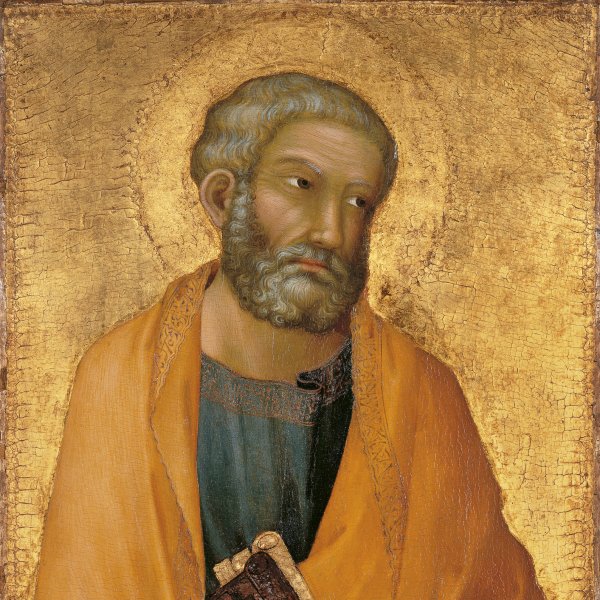Simone Martini
Siena, c. 1284-Avignon ?, 1344
Simone Martini probably trained in Duccio di Buoninsegna's Sienese workshop, and rapidly reached fame, as is proved by his earliest signed work, the Maestà painted al fresco in 1315 and exhibited in the Palazzo Pubblico in Siena. In 1317 Simone was at the service of Robert of Anjou in Naples, for whom he executed the monumental altarpiece with Saint Ludovic of Toulouse and René of Anjou, and Five Scenes of the Life of the Saint in the predella (Naples, Galleria Nazionale di Capodimonte), in which the painter shows a certain sensitivity towards Giotto's spatial inventions and the extraordinary linear elegance of the French gothic style. Three years later Simone painted the polyptych for the church of St. Catherine in Pisa (now in Pisa, Museo Nazionale di San Matteo), and shortly before that he executed the decoration al fresco of the chapel of St. Martin in the lower basilica of St. Francis of Assisi, commissioned by a high prelate, the Cardinal Gentile Partino da Montefiore, legate at the Anjou court in Naples. The cycle painted in Assisi, where a few years later Simone also made a series of half figures of Franciscan Saints, marked a turning point in the painter's activity, as he reached a high degree of maturity in his own artistic language from a plastic and spatial point of view. In 1321 he was again documented in Siena where he made, apart from a series of lost pieces, the altarpiece of 1326 for the residence of the Capitano del Popolo (see catalogue entry), the equestrian portrait of Guidoriccio da Fogliano (1330, Siena, Palazzo Pubblico) and, in 1333, in collaboration with his brother-in-law Lippo Memmi, the famous Annunciation with Saint Ansano and Saint Margaret for the Cathedral (Florence, Galleria degli Uffizi). Probably around 1335 he moved to the papal court in Avignon-few traces remain of the frescoes made for Notre Dame des Doms-where he befriended the poet Francesco Petrarca and where his work, characterised by an elegant and sensitive draughtsmanship and a technical perfection in his execution, marked the latter developments of the international gothic style.
Mauro Natale
Mauro Natale





